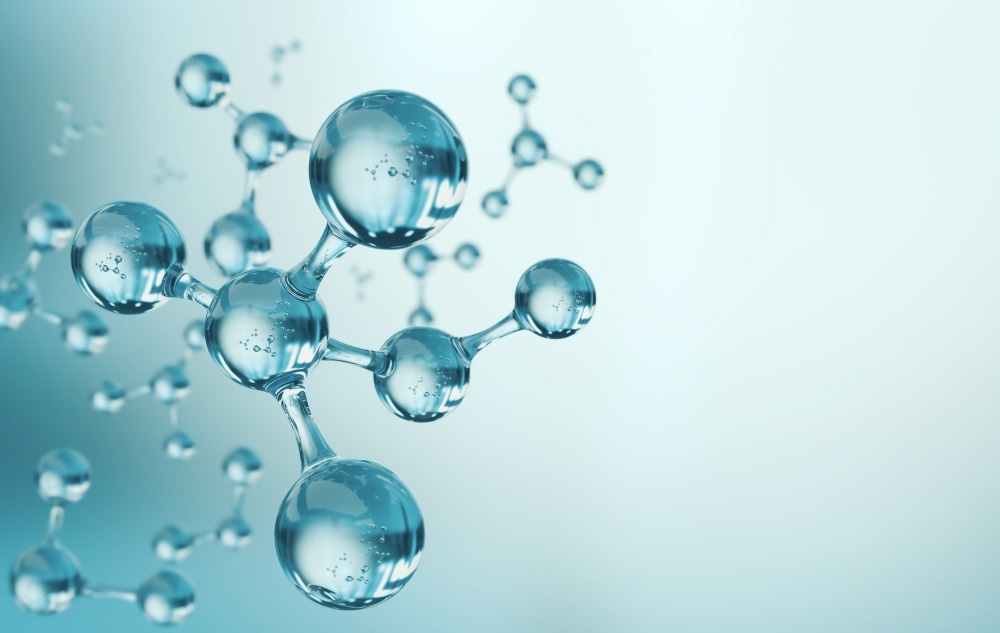Boosting the production of high-oxidation-state species of transition metals in electrocatalytic hydroxide nanosheets may enhance their catalytic performance in oxygen evolution reactions (OERs), which is challenging to accomplish using existing techniques.

Study: Promoting nickel oxidation state transitions in single-layer NiFeB hydroxide nanosheets for efficient oxygen evolution. Image Credit: Anusorn Nakdee/Shutterstock.com
In a paper published in Nature Communications, the synthesis of monolayer nanosheets of NiFeB hydroxide was presented. The study highlighted the effectiveness of boron in enhancing the production of high-oxidation-state nickel for enhanced oxygen evolution reactions.
Introduction to Oxygen Evolution Reactions
An oxygen evolution reaction is a critical half-reaction involved in several electrolytic applications, including rechargeable metal-air electrochemical cells and water splitting.
The slow kinetics of the four-electron transfer mechanism in OER creates an impediment to performance improvement for these applications.
Electrocatalysts based on noble metals are considered to be the most potent OER catalysts, but they are scarce and expensive. Therefore, the abundantly available non-noble-metal-based electrocatalysts, including NiFe and Co-based hydroxides or oxides, have been extensively studied as alternative transition metal catalysts.
Catalytic Activity of NiFe Hydroxide Nanosheets for OER
Cutting-edge NiFe-layered double hydroxide nanosheets have shown particularly high electrocatalytic activity in the oxygen evolution reaction under alkaline conditions.
The transition metals transform into high-oxidation-state entities during the oxygen evolution reaction. These entities are regarded as the active locations for the OER.
Stimulating the production of the desirable high-oxidation-state species of the transition metals would result in a lower onset potential and improved OER kinetics.
Enhancing OER Activity of Ni-Based Catalysts
Coupling a nickel-based catalyst with plasmonic nanoparticles (NPs) results in positively charged "holes" within the nanoparticles during exposure to visible light. This can rapidly promote the oxidation of neighboring nickel ions into high-oxidation-state species, resulting in better OER kinetics.
Ni oxide electrocatalysts are efficient in producing high-oxidation-state species of Ni for the oxygen evolution reaction when combined with other metallic oxides like MoO2 or non-metals like phosphate.
These electrocatalysts can significantly boost OER kinetics. Despite the positive aspects of these Ni-based electrocatalysts, there is significant scope for improvement in the OER kinetics.
It is important to explore effective techniques for promoting the oxidation of nickel to boost OER kinetics further.
Improving OER Activity of NiFe Hydroxide Nanosheets Using Boron
By integrating boron (B), which naturally has an electron deficiency, into typical NiFe hydroxide nanosheets, the transformation of nickel into high-oxidation-state species may be successfully accelerated, considerably improving OER kinetics.
Under usual circumstances, directly extracting electrons from Ni2+ to generate the required species is a complex process that cannot be completed without high voltage.
In close proximity to nickel, the boron may engage in the oxidation of nickel by acting as a transit area for the transport of electrons that occurs in this process.
The inherent electron-deficient nature of the boron transit area may serve as an electron sink to promote electron transport from the Ni2+ ions.
Using this concept, NiFeB hydroxide nanosheets may be used to achieve better kinetics of the oxygen evolution reaction as compared to boron-free NiFe hydroxide nanosheets.
Important Findings
The team successfully generated monolayer nanosheets of NiFeB hydroxide hydrolyzed NiFeB nanoparticles under alkaline conditions.
The findings of XRD, TEM, and XPS studies indicated the nanosheets were composed of a single MO6 layer.
The team analyzed the OER activity shown by the NiFeB hydroxide nanosheets and then compared it with the OER activity of boron-free NiFe nanosheets.
In an alkaline medium, the NiFeB hydroxide nanosheets demonstrated enhanced electrocatalytic performance compared to boron-free NiFe hydroxide nanosheets and excellent long-term stability for the oxygen evolution reaction.
The NiFeB hydroxide nanosheets outperformed most of the non-noble transition metal electrocatalysts for the OER.
Boron played a key role in the NiFeB hydroxide nanosheets by increasing the oxidation state of nickel, driving the potential-defining step in the OER, and lowering the energy barrier.
Conclusions of the Study
Introducing boron into NiFe hydroxide nanosheets was found to be an effective method of creating incredibly efficient OER electrocatalysts.
The inclusion of boron in the NiFeB hydroxide nanosheets lowered the potential needed for transforming Ni2+ into the high-oxidation-state Ni3+δ species, which ultimately lowered the onset potential and improved the kinetics of the OER.
In the NiFeB hydroxide nanosheets, the boron functioned as an electron sink during the catalyzed OER, promoting the oxidation of Ni2+ into Ni3+.
This study offers an effective approach for the electronic engineering of Ni-based catalytic nanosheets for optimal OER in high-performance water-splitting applications.
Reference
Bai, Y., Wu, Y. et al. (2022). Promoting nickel oxidation state transitions in single-layer NiFeB hydroxide nanosheets for efficient oxygen evolution. Nature Communications, 13. Available at: https://www.nature.com/articles/s41467-022-33846-0
Disclaimer: The views expressed here are those of the author expressed in their private capacity and do not necessarily represent the views of AZoM.com Limited T/A AZoNetwork the owner and operator of this website. This disclaimer forms part of the Terms and conditions of use of this website.